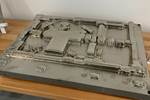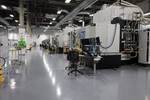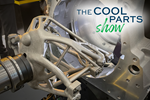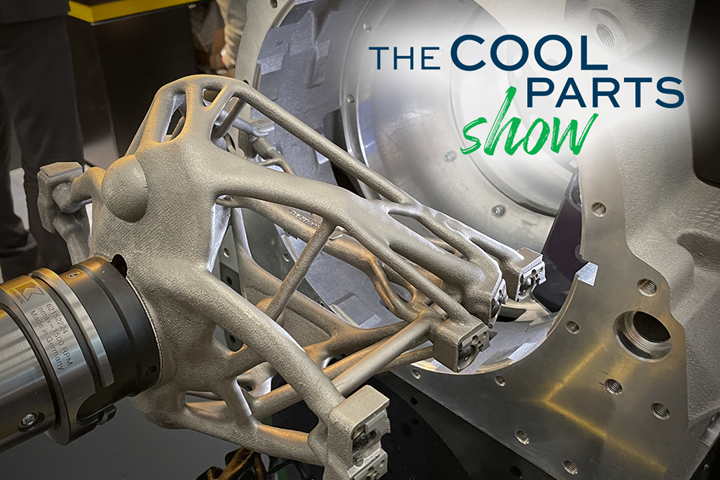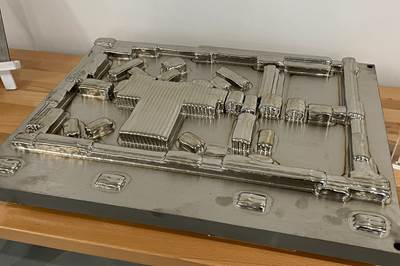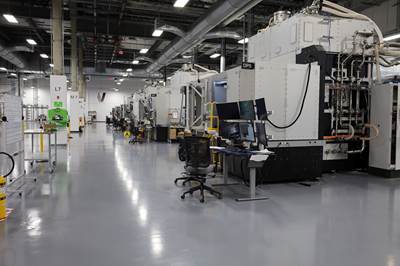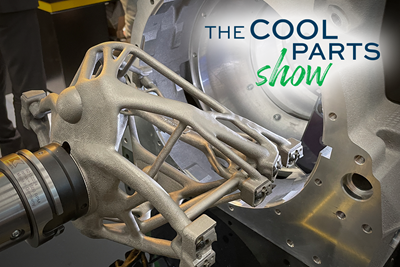Share
Read Next
Each year, the Additive Manufacturing Media team takes a look back at our top stories for the year, based on pageviews on our website. The top most-viewed articles and videos for 2023 are listed here; read more and access these article below, and subscribe to the AM Radio podcast to hear our conversation around why these particular stories rose to the top.
10. Seurat: Speed Is How AM Competes Against Machining, Casting, Forging
This Boston-area additive manufacturing facility aims to deliver high-volume metal part production at unit costs beating conventional processes. To get there, Seurat is using high-throughput laser powder bed fusion machines developed internally.
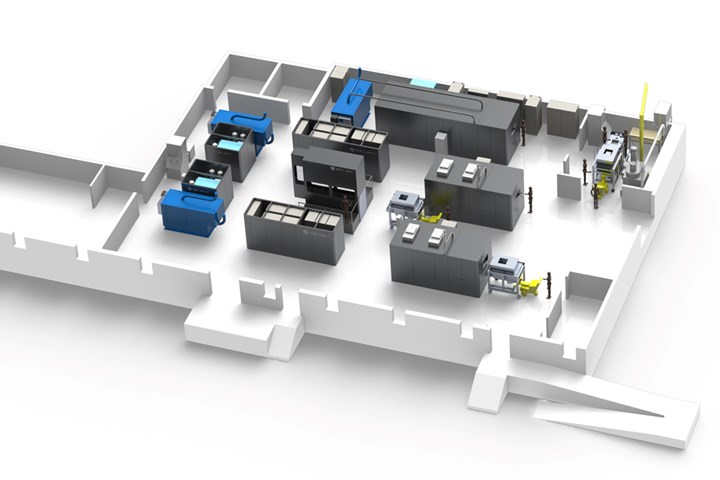
Seurat (and several other companies in stories on this list) is an example of what might be called an AM factory or a digital foundry — in other words, an additive business focused on scale production of parts made through a proprietary printing process. Image Credit: Seurat
Key takeaways: Seurat represents a new kind of additive manufacturing company, which might be called an “AM factory.” This is a business model in which the technology supplier is also the parts producer, offering a different avenue for OEMs to enter additive manufacturing without having to own and operate the technology internally.
9. DMG MORI: Build Plate “Pucks” Cut Postprocessing Time by 80%
AM technology provider DMG MORI has worked with users of its laser powder bed fusion (LPBF) machines to implement a simple but significant change to build plates to streamline production of small 3D printed parts. Separate clampable units resting within the build plate provide for easy transfer to a CNC lathe.
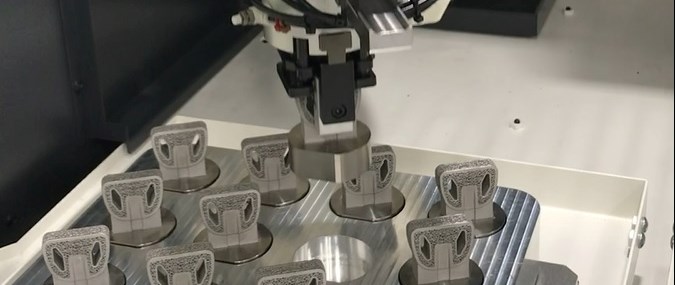
Among other things, the puck system enables robot automation. The robot tending a CNC machine tool can load the additive parts one at a time. Photo Credit: DMG MORI
Key takeaways: In many ways the 3D printing step is no longer the challenging part of additive manufacturing; as users move into production, the focus is shifting toward achieving greater efficiency in postprocessing.
8. Velo3D Founder on the 3 Biggest Challenges of 3D Printing Metal Parts
In this piece contributed by Velo3D founder and CEO Benny Buller, three challenges are outlined that metal AM needs to confront: cost, qualification and ease of development. Buller considers each of these in turn, with real-world examples from aerospace, automotive, oil & gas and space.
Key takeaways: AM may be maturing, but it still has hurdles to clear to achieve more widespread adoption. One way to approach this? Drive AM to follow the trajectory of CNC machining.
7. Why AM Leads to Internal Production for Collins Aerospace (Includes Video)
Collins Aerospace’s new additive manufacturing center in Charlotte, North Carolina, reflects the company’s growing additive manufacturing and production expertise. The decision to implement this center (and others like it in the future) was derived from the need to guard proprietary design and process details.

The original design for this aluminum bracket is seen at right. The reconceived design achieving weight savings through AM is at left. A part like this may have no design secrecy, but the process choices for 3D printing it effectively might represent valuable IP.
Key takeaways: Additive manufacturing IP is not limited to part design; factors such as laser path strategy, supports and orientation are also valuable assets that an organization may want to protect.
6. Possibilities From Electroplating 3D Printed Plastic Parts
Service provider RePliForm has developed a niche specialty: electroplating of polymer 3D printed parts. The Maryland-based company applies copper and nickel plating to these plastics parts to add functionality such as conductivity, shielding properties and structural strength.
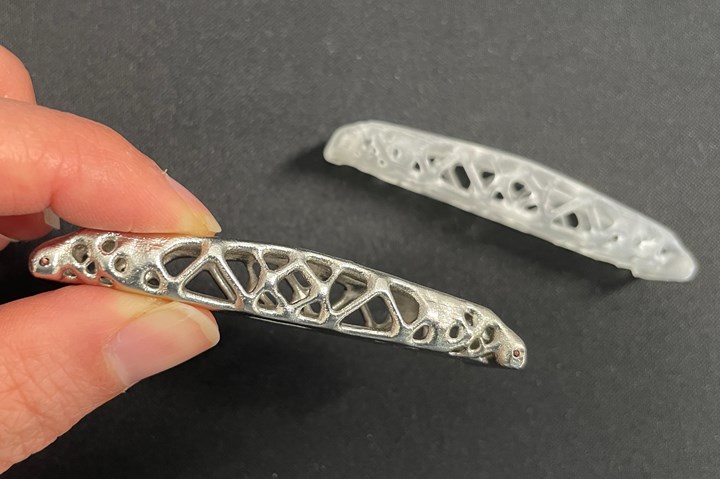
These topology optimized beams are an example of “functional electroplating”; layers of nickel added to the beam in the foreground make it significantly stronger than the original print behind it. These parts were designed by nTop, 3D printed using Formlabs SLA printers, electroplated by RePliForm and tested at Penn State University.
Key takeaways: There is a gap that exists between purely polymer and purely metal 3D printed parts. Electroplating can be a cost-effective way to take advantage of the speed and design capabilities of polymer printing while still achieving many of the properties of metal.
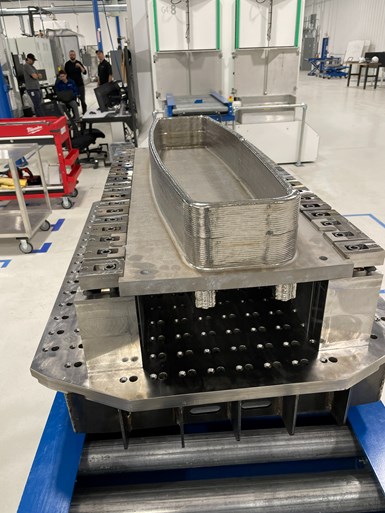
Parts made with Norsk Titanium’s Rapid Plasma Deposition offer properties comparable to forging and can proceed to machining without heat treat. This component is part of an unmanned aerial system developed by General Atomics Aeronautical Systems.
5. How Norsk Titanium Is Scaling Up AM Production — and Employment — in New York State
Another example of the “additive factory,” Norsk Titanium is scaling up production with its Rapid Plasma Deposition (RPD) process, a wire-fed method of of directed energy deposition (DED) able to produce Ti6Al4V parts with forging-like properties. Along with scaling the technology to provide high-quality parts for industries such as aerospace and semiconductors, the company is also scaling its workforce.
Key takeaways: Growth at Norsk is being driven in part by demand for lower cost titanium parts without the tooling investment needed for forging. Scaling up, even with this largely unattended process, has demanded simultaneous growth in staffing.
4. 3D Printed Cutting Tool for Large Transmission Part: The Cool Parts Show Bonus
This bonus episode of The Cool Parts Show highlights a 3D printed boring tool used in manufacturing the transmission housings of busses. The tool created with generative design was optimized for lightweight, replacing a much heavier boring tool that challenged the CNC machining centers performing this operation. (This tool was actually inspired by another seen in a previous episode of the show.)
Key takeaways: Optimization efforts such as lightweighting have implications for process efficiency and equipment lifespan; in this case, machining centers are able to perform the boring operation more quickly and with less downtime for maintenance.
3. AM 101: What Is Hot Isostatic Pressing (HIP)? (Includes Video)
Hot isostatic pressing (HIP) has long been used for metal castings, but is now being applied as a valuable method for closing porosity in metal 3D printed parts. This article and the associated video provide an entry level explanation of the process and reasons to choose HIP.
Key takeaways: HIP is a well-understood process that is now being applied for metal additive parts, bringing various benefits to their microstructure.
2. Additive Manufacturing Is Subtractive, Too: How CNC Machining Integrates With AM
For Keselowski Advanced Manufacturing, succeeding with laser powder bed fusion as a production process means developing a machine shop that is responsive to, and moves at the pacing of, metal 3D printing. Among other things, this means that machining centers might sit idle until the time comes to finish a metal additive part — and this is ok.
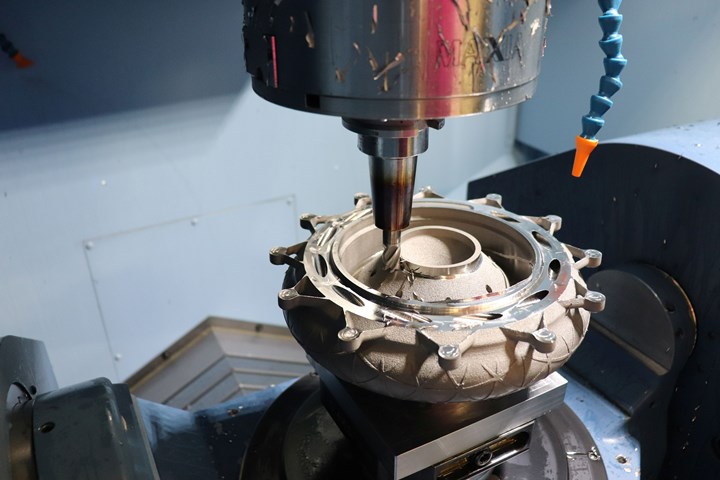
The part seen here is similar to space-industry turbomachinery components that receive extra stock and features during LPBF because of the way this allows machining to be performed more effectively. Photo Credit: Keselowski Advanced Manufacturing
Key takeaways: Finish machining can account for up to 60% of the work associated with a metal 3D printed part, and the workflow developed around this process is just as valuable as the additive step.
1. VulcanForms Is Forging a New Model for Large-Scale Production (and It's More Than 3D Printing)
Our number one story of the year by pageviews features another “AM factory” style company. VulcanForms, an MIT spinout, is leveraging proprietary laser powder bed fusion machines to manufacture metal 3D printed parts at scale. But this startup is not just an additive manufacturer; multiple production avenues — including machining — are considered in pursuit of creating value for the customer.
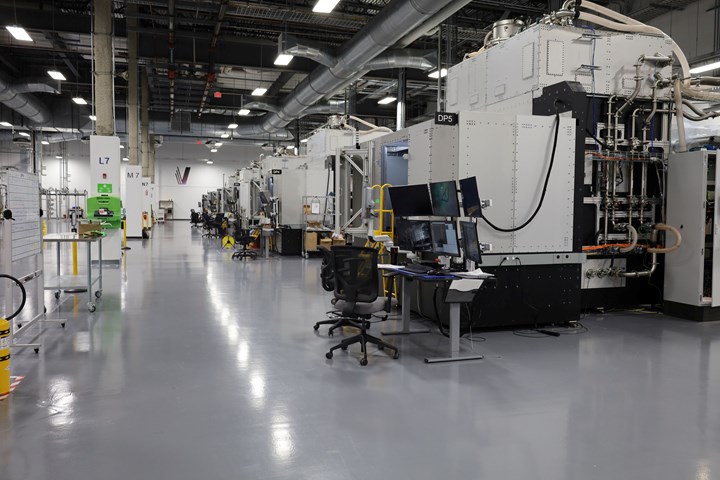
VulcanForms’ Devens, Massachusetts, facility serves as both the factory for assembling its high-throughput laser powder bed fusion 3D printers as well as a contract manufacturing facility using those same machines. There are more than 20 proprietary printers already in use at this location. Photo Credit: VulcanForms
Key takeaways: Digital manufacturing includes but also goes beyond additive manufacturing. Despite their divergent methods of part production, additive and subtractive manufacturing at VulcanForms are unified in their digitization.
Related Content
Additive Manufacturing Is Subtractive, Too: How CNC Machining Integrates With AM (Includes Video)
For Keselowski Advanced Manufacturing, succeeding with laser powder bed fusion as a production process means developing a machine shop that is responsive to, and moves at the pacing of, metal 3D printing.
Read More3D Printed Cutting Tool for Large Transmission Part: The Cool Parts Show Bonus
A boring tool that was once 30 kg challenged the performance of the machining center using it. The replacement tool is 11.5 kg, and more efficient as well, thanks to generative design.
Read MoreVulcanForms Is Forging a New Model for Large-Scale Production (and It's More Than 3D Printing)
The MIT spinout leverages proprietary high-power laser powder bed fusion alongside machining in the context of digitized, cost-effective and “maniacally focused” production.
Read MoreWhy AM Leads to Internal Production for Collins Aerospace (Includes Video)
A new Charlotte-area center will provide additive manufacturing expertise and production capacity for Collins business units based across the country, allowing the company to guard proprietary design and process details that are often part of AM.
Read MoreRead Next
How Norsk Titanium Is Scaling Up AM Production — and Employment — in New York State
New opportunities for part production via the company’s forging-like additive process are coming from the aerospace industry as well as a different sector, the semiconductor industry.
Read MoreVulcanForms Is Forging a New Model for Large-Scale Production (and It's More Than 3D Printing)
The MIT spinout leverages proprietary high-power laser powder bed fusion alongside machining in the context of digitized, cost-effective and “maniacally focused” production.
Read More3D Printed Cutting Tool for Large Transmission Part: The Cool Parts Show Bonus
A boring tool that was once 30 kg challenged the performance of the machining center using it. The replacement tool is 11.5 kg, and more efficient as well, thanks to generative design.
Read More

.jpg;width=70;height=70;mode=crop)
